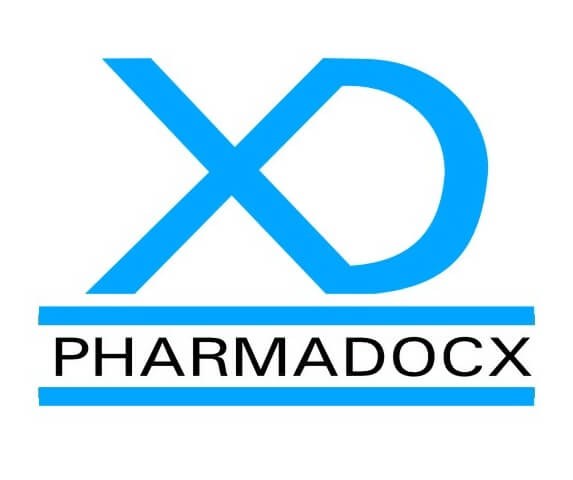Corrective Action Preventive Action (CAPA) focuses on eliminating the root cause of non-conformities It is a systematic approach aimed at mitigating the risks of undesirable events and non-conformities. CAPA forms the core of quality management system (QMS) in regulated industries, such as medical devices and pharmaceuticals. Notably, CAPA in quality management system helps achieve regulatory compliance.
What is CAPA?
CAPA stands for Corrective Action Preventive Action. CAPA is a series of procedures which investigates problems, identifies causes, solves problems, takes corrective actions, and prevents recurrence of the problem. The ultimate goal of CAPA is to prevent the problem from arising again.
Hence, CAPA is a vital component of the quality management system in medical device, pharma, and other life science industries. CAPA in quality management system aims to rectify current issues and prevent their recurrence in the future. The main focus of CAPA is the root cause of problems and risks to prevent them from reoccurring in the future. A risk-based CAPA process facilitates risk detection and prioritization of necessary corrective actions.
What is the Corrective Action Preventive Action (CAPA) process?
CAPA in quality management system is of considerable significance in the medical device and pharmaceutical industry. CAPA forms the core of a robust QMS system.
- Identification of the Problem: The CAPA process begins with identifying or detecting the problem. The issue or the problem can be an internal audit finding, customer complaint, non-conformance report, or any other indication of an issue.
- Investigation of the Problem: After the problem has been identified, the root cause has to be determined. A thorough investigation has to be conducted to determine the root cause or causes of the problem. The aim of this step is to determine why the problem occurred in the first place to prevent recurrence of the issue.
- Reviewing the Impact of the Problem: The impact or potential impact of the problem on products, processes, systems, or compliance requirements is reviewed. This helps in prioritizing the next actionable steps.
- Resolving the Problems or Corrective Action: In the next step, corrective actions are developed to resolve the identified root cause(s) of the problem. These specific actionable measures are taken to eliminate the cause of the detected issue or non-conformance.
- Implementation of Preventive Action: Preventive measures are implemented to prevent the recurrence of the identified problem. The corrective actions are implemented to address an issue that has already occurred. On the other hand, preventive actions are proactive measures taken to mitigate potential future issues.
- Reviewing the Performance of the Corrective Measures: After implementing the corrective and preventive actions, the effectiveness of the corrective measures is evaluated. The performance of the action is verified by monitoring and evaluating the outcomes of the measure. Notably, this step is vital to ensure the actions taken have resolved the identified problem and prevented its recurrence.
What necessitates a CAPA in quality management system?
CAPA in quality management system is a key driver for quality improvement in medical device and pharmaceutical industry. Certain issues trigger the CAPA in quality management system. We have listed some of the activities that necessitate the implementation of CAPA process in QMS.
- Complaints: Any communication that indicates flaws in a product after it has been marketed is considered a complaint. Complaints trigger the need for an investigation to identify the cause or reason for the complaint. Notably, a single compliant may not necessitate the CAPA process. However, several complaints about the same problem with the product may trigger the CAPA process. Additionally, unfavourable incident or complaints involving patient injury will trigger the CAPA.
- Non-conformance: When the process, service, or product does not perform as intended, it is considered a non-conformance. Non-conformance occurs when the end result does not meet the original set standard. Non-conformances can be product-related, process-related as well as non-conformity detected during the audit. Notably, not all nonconformances will necessitate a CAPA.
- Audit non-conformities: Issues that need rectification may be identified during internal and external audits. These issues identified during audits have to be addressed immediately prior to regulatory inspection. You need to check whether the issue is widespread and actually requires a CAPA. The need for CAPA may arise from a systemic quality issue. However, while conducting internal audits, most medical device and pharmaceutical manufacturers will escalate each non-conformity to CAPA.
A robust risk-based CAPA in quality management system ensures continuous improvement and adherence to quality standards.
How to develop an effective risk-based CAPA in quality management system?
- Understand the CAPA Requirements and Industry Standards: Understand the applicable regulatory standards and guidelines, such as ISO 13485, for CAPA in quality management system. By understanding the regulatory requirements, you will be able to develop a robust CAPA process and ensure regulatory compliance.
- Identify the Risks: A thorough risk assessment process will be required to identify potential hazards associated with the products. Moreover, the severity and likelihood of risks have to be thoroughly evaluated.
- Prioritize Risks Based on Impact: Prioritise risks based on their potential impact on patient safety, product quality, and regulatory compliance. Furthermore, rank the risks based on criteria, such as occurrence, severity, and detectability. Hence, by prioritising risks, you will be able to address the most critical issues first.
- Establish a thorough CAPA Plan: Develop a thorough CAPA plan outlining the specific actions needed to address the identified risks and mitigate similar future recurrences. The CAPA should define the actions that need to be implemented to address the nonconformities.
- Implement the Actions Defined in the Plan: Implement the corrective and preventive actions. Furthermore, the actions have to be well-documented. Additionally, staff training may be necessary to ensure everyone understands the changes.
- Monitor Effectiveness of the CAPA Plan: After implementing the plan, monitor the effectiveness of the actions. Furthermore, regular audits will help verify whether the CAPA plan is functioning as intended.
- Documentation and Review: Comprehensive documentation of all CAPA activities will be required. Risk assessments, action plans, implementation results, and data recorded will have to be properly documented. The CAPA process has to be properly reviewed to identify areas of improvement. Additionally, it will ensure compliance with applicable regulatory requirements.
- Continuous Improvement: A risk-based CAPA in quality management system ensures a culture of continuous improvement. Additionally, feedback and insights from review will help refine the CAPA process. Moreover, by adopting a proactive approach, your organization will be able to respond to emerging risks and industry challenges.
What is the importance of CAPA in quality management system?
CAPA is a well-structured system of defined processes. It forms the heart of the quality management system. CAPA helps identify, evaluate, and investigate deviations or non-conformities. Additionally, CAPA will help develop corrective actions, implement them, and check effectiveness of the resolution. Hence, CAPA process in QMS has a crucial role in regulated industries, such as medical device and pharmaceutical. CAPA provides the following benefits:
- Helps resolve and reduce quality issues
- Reduce customer complaints
- Provides a uniform method for problem-solving
- Ensures compliance with regulatory requirements
- Helps meet the industry quality benchmark
- Reduces rework
- Promotes an environment of continuous improvement
Hence, incorporating risk-based CAPA in quality management system improves product quality and customer satisfaction. Additionally, it reduces chances of regulatory non-compliance. We at Pharmadocx Consultants have extensive knowledge and expertise in the medical device and pharmaceutical industry regulatory guidelines. Our team of experts will establish a robust and effective QMS tailored to your needs. Drop an email at [email protected] or call/Whatsapp on 9996859227 and we will help you get started.





